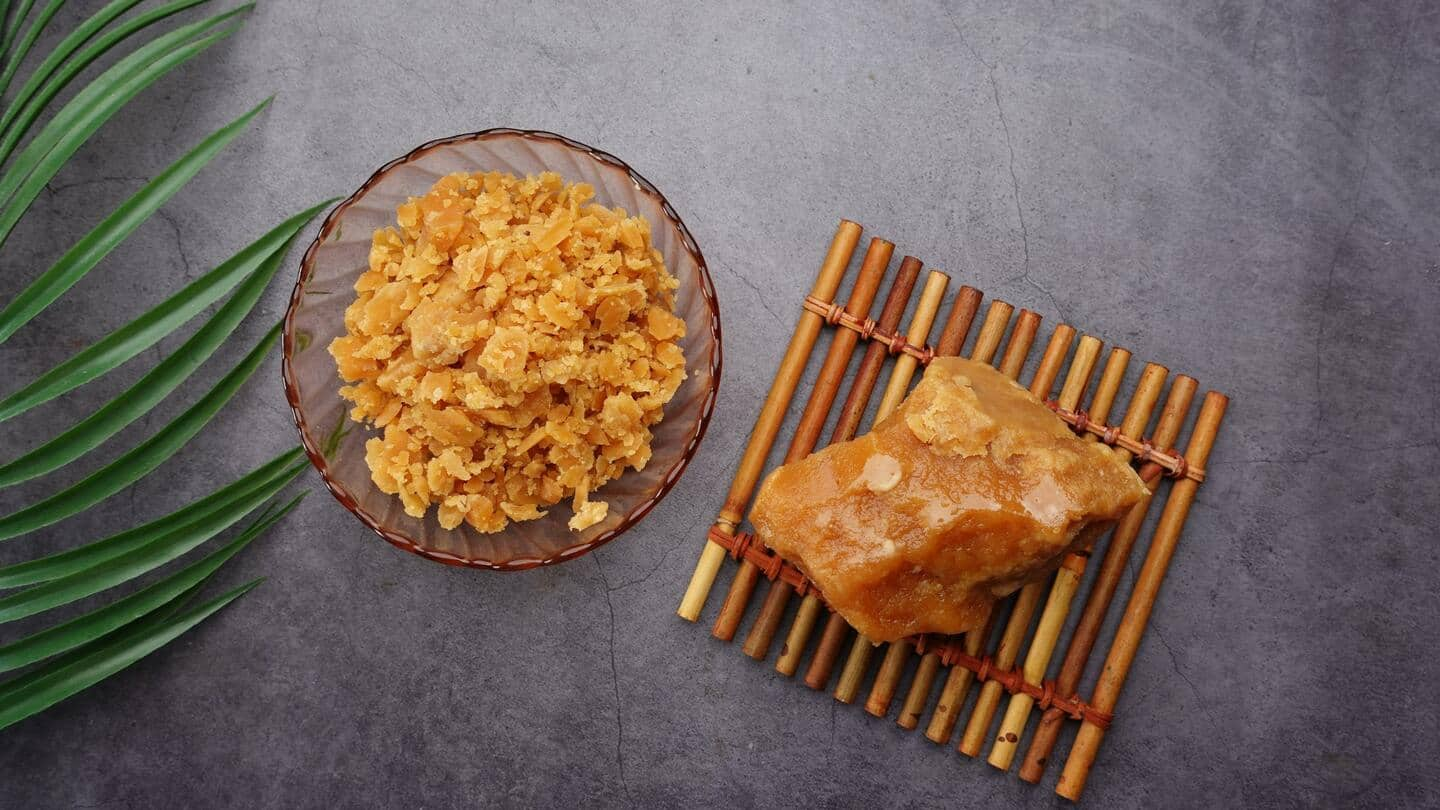
Different types of jaggery you probably didn't know existed
What's the story
If you are a health freak, jaggery is something that you can include in your daily diet as an alternative to sugar. Rich in antioxidants and anticarcinogenic properties, this sweet treat exists in some distinct variants, some of which we are sure that you didn't know of. Here are a few different types of jaggery and their health benefits. Check them out!
Chewy
Palm jaggery
Also called khajoor gur, palm jaggery is made from the sap of palm trees and is cooked and churned by hand. Loaded with potassium, iron, phosphorus, and magnesium, palm jaggery is dark brown in color and has a melt-in-the-mouth texture. Mostly popular in West Bengal, this jaggery helps maintain your body's hemoglobin levels and boosts your immunity. It also helps boost digestion.
Indian diet
Sugarcane jaggery
This jaggery is extracted from sugarcane juice after boiling, filtering, and churning it through traditional methods. The juice is then chilled and solidified to form jaggery blocks. One of the most popular forms, this jaggery is sweet in flavor but hard to bite. Available in both light and dark brown colors, it aids in weight loss, detoxifies the liver, and keeps respiratory problems away.
Hard texture
Coconut jaggery
Prepared from unfermented coconut sap that has been drained, heated, and crystalized, coconut jaggery is rich in iron and magnesium and does not contain sucrose. Widely used in Goan cuisine and South Indian dishes, this jaggery has a hard texture and is dark in color. Additionally, it is highly effective against sore throat, cough, and cold problems. It also helps cool down the stomach.
Sweetest form
Marayoor jaggery
The Idukki district of Kerala, Marayoor is widely known for the production of sugarcane. Produced using traditional technologies, this jaggery is cultivated in the terraced sugarcane fields of the Marayoor and Kanthalloor regions, and is one of the sweetest forms of jaggery without any salty taste. Widely consumed in Southern India, this jaggery is produced by farmers of the Muthuva tribe.